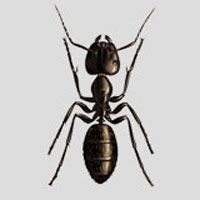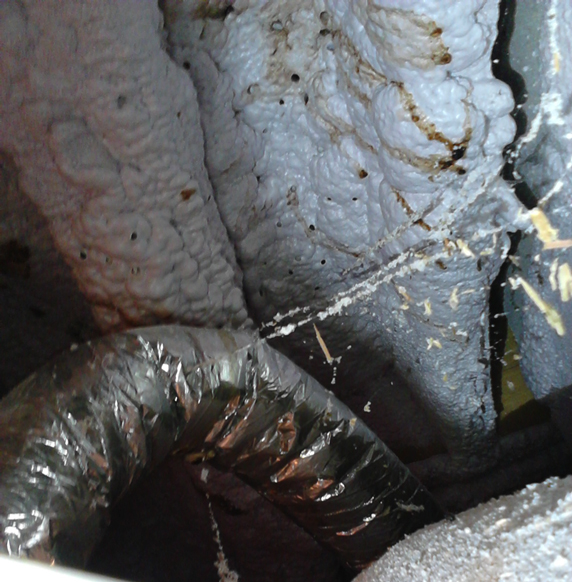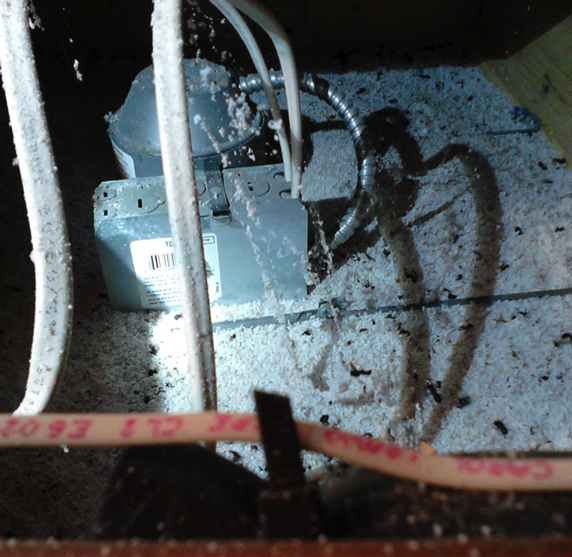Carpenter Ants Attack!
By Chris Williams on July 1, 2015.
 We know that carpenter ants attack both sound and unsound wood in structures to build their nests, but did you know that they have some new options for nesting choices as construction materials continue to evolve?
We know that carpenter ants attack both sound and unsound wood in structures to build their nests, but did you know that they have some new options for nesting choices as construction materials continue to evolve?
For years I’ve had my share of headaches dealing with carpenter ants in stress skin or SIP foam insulation panels and that is almost a no-win situation in pinpointing the exact location of a nest in that type of system. These are typically located in walls or cathedral ceilings.
Lately, I’m seeing much more sprayed polyurethane and icynene spray foam insulation used in new building construction as an alternative to traditional fiberglass batt and also for insulation upgrades. To be sure, there is a lot to like about both these alternative types of insulation. They have good R-value, they’re dust free, and from a pest control perspective, I’ve seen a lot of serious mouse problems in basements be eliminated when the homeowner upgraded to this material and had existing mouse contaminated fiberglass insulation removed.
That is the good news, but with good news there has some bad news too, right? These foams are very easily attacked and exploited by carpenter ants. I’d say in the past two seasons, I’ve had at least three or four calls for treatment of carpenter ant infestations in sprayed foam insulation. Here are a couple of shots I took in an attic crawl space showing the ant galleries, and some of the foam ‘frass’ falling below. Notice the brown staining on the foam. This is probably from some moisture infiltrating somehow from below or above; I don’t know. Because of its open cell structure, icynene foam will allow vapors to pass through, but there was obviously enough moisture here to support the ants. It may also have been coming from the central air conditioning unit.

The small holes show carpenter ant tunnel entrances, and the brown staining indicates moisture, which the ants love.

The material that looks like sawdust is actually carpenter ant frass – excretions, chewed wood, dead ants and other debris.